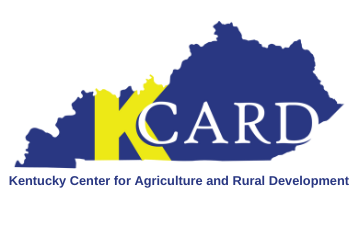Local food producers have to compete in a food system that, more often than not, makes it more convenient and affordable for a consumer to purchase a comparable non-local product. Cheaper out-of-state blueberries at the grocery store, the limited hours and attendance at a farmers’ market, or the high costs of hauling one’s product to a restaurant or store, are just three examples of challenges that a local producer may face in making a profit. Despite such challenges, the following maps of local food sales in Kentucky show that interest in local food has grown state-wide and that there is plenty of room to grow if some of these market barriers can be addressed.
Three of the maps prepared for the Kentucky Local Food System Story Map show local food sales across the state. Data for all three maps was taken from the USDA Census of Agriculture.
The first of these maps compares direct-to-consumer local food sales in 2007 with local food sales in 2017. Direct-to-consumer refers to producers selling their product through an outlet where they deal directly with the purchaser who will consume the product, e.g. farm stores or stands, farmers’ markets, CSAs, online farm stores, and u-pick operations. 72 out of 120 counties saw an increase in direct-to-consumer local food sales, and many of those counties saw a considerable increase. The counties with the highest increase in direct-to-consumer local food sales for this 10-year period were:
Magoffin County (2800%)
Warren County (656%)
Christian County (647%)
Daviess County (632%)
Simpson County (547%)
For an interactive view of the maps with county data, view the full website here.
The second local food sales map highlights the revenue generated by farms selling local products direct-to-consumer in 2017, so that one can see which counties had the most sales and which counties had the least sales that year. The top grossing counties were:
Allen ($2,100,000)
Warren ($1,700,000)
Pulaski ($1,530,000)
Christian ($1,270,000)
Daviess ($1,127,000)
The third map visualizes “other direct sales” of local food, which means local food that was sold to a restaurant, retailer, wholesaler, distributor or institution (schools, universities, hospitals, and corporate cafeterias). 2017 was the first year the data for this type of sale was collected by the Census of Agriculture, so there is no data to compare from previous years.
What stands out on the map are the many counties where limited data is available. This means that if the data for that county was made public, a specific producer would have been identified. The Census of Agriculture protects the identities of producers and keeps all reporting anonymous. Therefore, 69 out of 120 counties had either no producers reporting “other direct sales” of local food or limited data was available. With less than half of all Kentucky counties reporting measurable sales in this area of purchasing, there is opportunity across the state for these sales to increase. Over the past three years, KCARD’s Local Food Expansion Initiative has attempted to address some of the challenges that local food producers face when trying to begin or expand sales in these markets and has assisted many Kentucky producers in connecting with these types of buyers.
Are you a producer looking to expand sales beyond direct-to-consumer or a buyer looking to purchase local food? Contact us at kcard@kcard.info or 849-550-3972 today.




